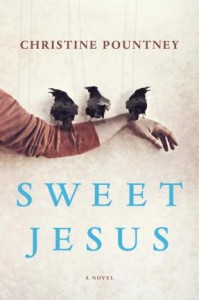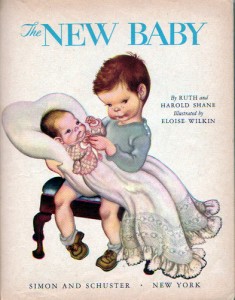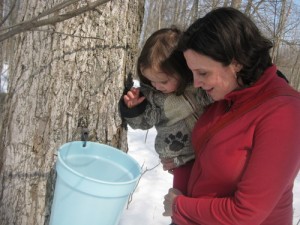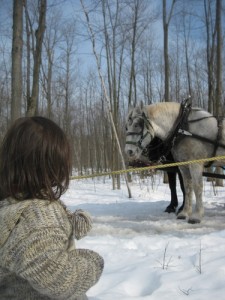March 10, 2013
Sweet Jesus by Christine Pountney
The first time I read the plot summary for Sweet Jesus by Christine Pountney, I was terrified.  Two adult sisters and their adoptive brother long-estranged, each with a dizzyingly elaborate back-story, all decide to jump in a truck in the run-up to the 2012 US Presidential Election and go look for America. I was sure it was a novel that couldn’t possibly work, but then great reviews started coming in, and there were readers who couldn’t stop talking about it. I was further intrigued by the Miriam Toews’ blurb, because Toews knows something about literary road trips. I’d also read Pountney’s previous novel, and I’d been interested in her unlikeable protagonist, and I wondered what kind of a novel this one would be whose approach was so much broader.
Two adult sisters and their adoptive brother long-estranged, each with a dizzyingly elaborate back-story, all decide to jump in a truck in the run-up to the 2012 US Presidential Election and go look for America. I was sure it was a novel that couldn’t possibly work, but then great reviews started coming in, and there were readers who couldn’t stop talking about it. I was further intrigued by the Miriam Toews’ blurb, because Toews knows something about literary road trips. I’d also read Pountney’s previous novel, and I’d been interested in her unlikeable protagonist, and I wondered what kind of a novel this one would be whose approach was so much broader.
The novel begins with strength, in Chicago with Zeus Ortega, a professional clown whose lover is dying. As a young boy, Zeus had been adopted by the Crowe family, whose oldest daughter Connie had retained her Christian faith but she finds it tested when her husband reveals that he has gambled away all their money. Connie is in Victoria, and on the opposite coast, her younger sister Hannah (who will be familiar to readers from both Pountney’s previous novels) is visiting Newfoundland with her partner Norm, learning to hold a gun and shoot and moose, delighting in the ease of her feelings for Norm, except that she’s longing to have a baby and he doesn’t want to.
The novel’s three sections read like completely separate books, and while each section stands on its own, with deeply realized characters whose depth and complexity are compelling, I was doubtful that the stories could come together to form a seamless whole. And in a way, I was right, because while the stories do come together, there is a certain artificiality to the plotting, and depth and complexity goes by the wayside–I wanted to see these people immersed in their own worlds rather than uprooted from them. Pountney has a lot to say about sibling relationships, but the connections between Connie, Zeus and Hannah are so much more superficial than the characters’ connections to others in their lives.
By the time the siblings all meet up, however, the plot is running on the momentum of rolling wheels and open roads, and the reader will want to follow where they’re going. The destination is a mega-church in Wichita, Kansas, where Connie hopes to have her faith confirmed, where Hannah hopes to reconcile her lack of faith with her history (and perhaps make sense of her feelings for Norm), and where Zeus is hoping they won’t have to pause to long as he is en-route to New Mexico to be reunited with his birth parents. Nothing there unfolds as anyone imagined, and not one of the characters will be moving on from Kansas in quite the direction they’d planned.
Sweet Jesus is enormously ambitious in its reach, mostly successful, and packed with solid writing and more questions than answers–about faith, family, and the ties that bind us. Though the novel wobbles in parts, there is steadiness at its heart, and most importantly it leaves me enormously intrigued about what Pountney is going to get up to next.
March 8, 2013
I am not a very complicated creature
It’s often around this time of year when it becomes most clear to me that I am not a very complicated creature . Basically, make the sun shine and all challenges seem conquerable. Today I dropped Harriet off at school and walked home without my hat on, there is more grass than snow on the ground, and we passed a woman who was walking down the street, sans mittens, reading a book. Even if I hadn’t spent the last week and a half much obsessed with the enormous lump upon my neck and riding an emotional roller coaster, I would still be finding this day to be one infused with hope and possibility. Even if I hadn’t spent the last week and a half much obsessed with the enormous lump upon my neck and riding an emotional roller coaster, I would still have found plenty to complain about during this time because these lingering winter weeks pre-spring are pretty brutal, and it would be around now, the no-hat day, when I start thinking that maybe everything is going to be survivable after all.
. Basically, make the sun shine and all challenges seem conquerable. Today I dropped Harriet off at school and walked home without my hat on, there is more grass than snow on the ground, and we passed a woman who was walking down the street, sans mittens, reading a book. Even if I hadn’t spent the last week and a half much obsessed with the enormous lump upon my neck and riding an emotional roller coaster, I would still be finding this day to be one infused with hope and possibility. Even if I hadn’t spent the last week and a half much obsessed with the enormous lump upon my neck and riding an emotional roller coaster, I would still have found plenty to complain about during this time because these lingering winter weeks pre-spring are pretty brutal, and it would be around now, the no-hat day, when I start thinking that maybe everything is going to be survivable after all.
The thing about emotional roller coasters though is that they’re not very stable. I’ve had a couple of good days in the past week or so during which I’ve thought that I’ve got a handle on everything, only to find myself profoundly disappointed the next day when all outcomes seemed quite terrifying again. (Interestingly, these next days were always grey and dreary.) For anyone who has had a life in which things have happened, this will not be all that surprising, but as I tend to spend most of my time at home and contented, delighted with pouring tea from a red teapot, I’m not so used to twists and turns. I’m more than a little uncomfortable with the idea that today’s spring-time high is going to have to be come down from at some point. I am looking forward to having my husband on holiday next week and all the fun things we’re going to get up to, but then there is a biopsy in the middle of that week and I think that the wait for results will drive me out of my mind, spring or no spring. I am so afraid of that phone call.
But I am also looking forward to Thursday, the day after the biopsy, because I have a midwife’s appointment and near-constant kicks in the ribs make me quite confident that Baby is thriving. I want to go to the midwife’s, that wonderful place where all is so healthy and normal. I now find myself longing for the baby’s birth, in a way I never thought I would due to my slight aversion to newborn people. I am no longer dreading all the trauma and turmoil of birth and a new baby because it’s healthy, normal trauma and turmoil. I want to be out of my mind because it’s four a.m. and my nipples are chapped. Who ever would imagined that anything would bring me to this point. Twists and turns indeed; life is funny.
But in light of the sun’s shine, life also seems very good. Is it embarrassing to disclose how much I am enjoying reading On the Banks of Plum Creek with my family each evening, and how inspired I am by Charles and Caroline Ingalls’ courage? We will get through this, neck lumps, grasshopper plagues, chapped nipples and all. There are more sunny, wonderful days to be had.
March 7, 2013
Ascent of Women by Sally Armstrong
“I hope readers will see that the situation is changing everywhere . It’s time for all of us to say, “No more” and to go to the barricades—and to claim our space.”–Sally Armstrong in my Q&A with her at 49thShelf.
. It’s time for all of us to say, “No more” and to go to the barricades—and to claim our space.”–Sally Armstrong in my Q&A with her at 49thShelf.
For those of us who aren’t Sally Armstrong, those of us who haven’t spent the last 25 years bringing home stories of violence against women, subjugation of women and the trampling upon and disregard for women’s rights all over the world, the immediate impression of Ascent of Women isn’t that this is a book about hope and change. Instead, it’s overwhelming to consider that the plight of women in so many places is so terribly dire: scores of Aboriginal women missing and murdered in Canada while police did nothing; the idea of rape as a weapon of war, and that female populations of entire villages in the Congo have had to live through this violence; a fire at a girls’ school in Saudi Arabia during which students died because they weren’t permitted to escape the blaze with their heads uncovered; the endangered lives of women in Afghanistan under the Taliban; “honour” killings; young girls forced into early marriage; genital mutilation practices, and on and on.
My immediate impression of this book is testament to another point that Armstrong makes: that for the last 25 years as she’s been reporting these stories, the world hasn’t done a terrific job of listening. She gives a shocking story of an editor who “forgot” to follow up on a story she’d brought him of 20,000 Muslim women being gang-raped in Bosnia in 1992. I know that Armstrong was reporting on the Taliban when no one else was, long before September 2001 when the world finally turned its attention toward Afghanistan and feigned to care for what happened to the women of that country.
But things are changing, which is Armstrong’s thesis in Ascent of Women. She connects this tide of change to the awareness that dawned on Western Women in the 1960s and ’70s that the status-quo was no longer acceptable. She cites examples of women all over the world who are effecting change in their communities by standing up to patriarchy and tyranny. In Kenya, 160 girls are in the process of suing their government for failing to protect them from rape; women in Afghanistan have dared to question interpretations of the Koran; the idea that violence is cultural is starting to be undermined by women speaking out against this bogus “culture”; unique programs are being put in place to empower people to change their own minds about approaches to women’s health; economists are demonstrating that women’s financial empowerment is the key to progress in developing nations; grandmothers supporting AIDs orphans are coming together to support one another in South Africa; women who fought for change in Egypt during the Arab Spring are refusing to take a place on the sidelines of the revolution they brought about.
Armstrong’s book is powerful, profound and inspiring. Its organization is a bit haphazard, but then this haphazardness underlines Armstrong’s point: that something is happening here, and not even systematically, but in an organic, surprising, awe-inspiring fashion whose force is, amazingly, impossible to contain.
Check out my Q&A with Armstrong, along with an excerpt from her book.
March 5, 2013
Eloise Wilkin's The New Baby: Vintage Vintage Edition
 After my recent post about Eloise Wilkin’s The New Baby, in which I mentioned that I’d tracked down a copy of the 1948 edition from AbeBooks, many people let me know that they had copies of the older edition (and that their kids liked it!). One of these people was my aunt, who informed me that her copy of The New Baby had been a gift from her older sister (my other aunt) on her fifth birthday, and within three days, her copy had made its way across the country and into my mailbox where we were so delighted to encounter it.
After my recent post about Eloise Wilkin’s The New Baby, in which I mentioned that I’d tracked down a copy of the 1948 edition from AbeBooks, many people let me know that they had copies of the older edition (and that their kids liked it!). One of these people was my aunt, who informed me that her copy of The New Baby had been a gift from her older sister (my other aunt) on her fifth birthday, and within three days, her copy had made its way across the country and into my mailbox where we were so delighted to encounter it.
I am grateful to say that Mike from the story only looks demonic on the title page, and that he’s mostly cute for the rest of the book. (Will also say that Eloise Wilkin’s art improved considerably and became much more charming from the 1940s to the 1970s). The story is quite different in its details than my 1970s’ version–Mike and his family live here in a rural idyll, and his Daddy’s lawnmower is a push-mower (which he pushes while smoking a pipe. He is always smoking a pipe.)
As other readers have noted, Mike’s mother is not permitted to look pregnant in the 1948 edition, though she is just days away from giving birth. No wonder “Mike couldn’t believe it!” when he hears the news. I can’t really believe it either.
The architecture of their house is nice enough, but I am not dying to live in it the way I am with Mike’s house from the ’70s (that window seat!).
Instead of a pram being delivered at the beginning of the story, alerting Mike to the news of changes afoot, the delivery man brings something called a “bathinette”. A google search reveals that bathinettes are real and still exist, though I’ve never seen one. They seem to be designed for people with a surfeit of money and space in their houses, like a changing table but with a tub instead of a changing surface. They also have a terrible name that sounds like an irresolvable lisp.
 The biggest change in character is with Aunt Pat, who in the 1970s’ book seems to be a pretty college girl who has come home for a few days to help out her older sister. Thirty years before, she’d been an impossibly old spinster with braids wound around her head and something seriously wrong with her jawbone–she appears to have a case of the mumps.
The biggest change in character is with Aunt Pat, who in the 1970s’ book seems to be a pretty college girl who has come home for a few days to help out her older sister. Thirty years before, she’d been an impossibly old spinster with braids wound around her head and something seriously wrong with her jawbone–she appears to have a case of the mumps.
There is a lot of text on the pages, fewer pictures, and Harriet was impatient to get on with the story. Interestingly, Wilkin similarly situates both stories in Springtime, with blossoms on the trees and robins on the lawn digging for worms, which seems to be what the books most have in common. Though the ending is also the same, Mike asking to hold his new baby sister and deciding that having a new baby in the family was going to be just fine.
The older versions of the book we have feature two different final pages, and both are a bit curious. One shows five different images of babies thumb-sucking, stretching, sleeping. And the other is totally bizarre–it’s Mike’s baby sister hovering over her bassinet. Is she levitating, I wondered? Harriet posited that she was bouncing on the bed. And both of us decided that it wasn’t a safe-sleep position for a newborn whatever it was.
Less than being disturbed by the matter though, Harriet has decided that the hover-baby edition of The New Baby is the only one she will consent to have read to her.
More about kids’ books: please read Sara O’Leary’s wonderful post on boys and reading, which features the line, “My boys both had dints on the tops of their heads as babies from where I used to rest my book while I was breastfeeding.” Indeed!
March 3, 2013
On Reading for Comfort and Answers
 “It feels as if coming to this house, and picking these books to read, has had in its chancy juxtoposition something of divine revelation. I’ve always had a penchant for doing this, opening books at random, letting words or phrases leap out to show me the way–for decades, I have turned to The Books of Knowledge, my grandmother’s encyclopedia, and riffled through the pages looking for answers whenever I am in doubt.” –Isabel Huggan, “Homage to Kenko”, from Belonging
“It feels as if coming to this house, and picking these books to read, has had in its chancy juxtoposition something of divine revelation. I’ve always had a penchant for doing this, opening books at random, letting words or phrases leap out to show me the way–for decades, I have turned to The Books of Knowledge, my grandmother’s encyclopedia, and riffled through the pages looking for answers whenever I am in doubt.” –Isabel Huggan, “Homage to Kenko”, from Belonging
I knew nothing about what to expect in the days and week’s after Harriet’s birth, and most of my imaginings about the whole thing were so incredibly wrong, but the one thing I got right somehow was deciding to tuck Laurie Colwin’s A Big Storm Knocked It Over in my hospital bag. There could have been no book more perfect for those days than that one, that book with the passage that summed up the whole experience of new motherhood like nothing else I’ve ever read (“The days seemed to congeal like rubber cement, although moments stood out in clearest, starkest brilliance…”) and helped me understand what we were going through, that women had felt like I had time and time again before me.
Last week, in fits of anxiousness and desperation, I wanted to turn to Colwin again, to Laurie Colwin with her perfect combination of lightness and edge, with her acknowledgement of the presence of joy in the world, but then I couldn’t bear to. Colwin’s capacity for joy is all the more heartbreaking when one considers her sudden death, and when one is consumed by hysterical thoughts of one’s own sudden death, such things are not to be considered at all. They will bring no consolation. (They will again though. I plan to spend my summer reading Laurie Colwin and Barbara Pym.)
There were other things I had to read though, a new book for review and also Sally Armstrong’s new book Ascent of Women, as I was putting together a Q&A for 49thShelf. The former was hard to take partly because I had to read it on on PDF on an iPad (and what a relief to finish! To return to the reality of paper again) and partly because the protagonist’s best-friend-dead-from-cancer whose sudden demise had inspired the protagonist to no longer take her own existence for granted failed to inspire me at all, except to cringe. Sally Armstrong’s book was more useful, offering the gift of perspective and taking my mind off my own problems. I was grateful for the distraction, though the book plus my own anxiety last Tuesday lead to terrible dreams of a million giant-sized Mohammad Shafias. Very odd.
I decided that I would read Isabel Huggan’s Belonging next, partly because I received a very kind note from her last week, also because I remembered how much comfort and happiness I’d received from reading The Elizabeth Stories in October after first-trimesterness had kept me from enjoying any book for ages, and mostly because I’d been saving it–perhaps for this very moment in time. It occurs to me that in books, I was looking for the same answers I’d been seeking in my desperate google searches last week, but the difference was that in books, or perhaps just this book, I was even finding some.
Like this:
“Over time, I’ve come to understand that when Jamal says that a situation is normal, he means that there are flaws in the cloth and flies in the ointment, that one must anticipate problems and accept them as a part of life. Whereas I’ve always thought that things are normal until they go wrong, Jamal’s version of reality is causing me to readjust my expectations for fault-free existence and to regard the world in a more open fashion.”–Isabel Huggan, “Leaning to Wait, from Belonging
February 28, 2013
Brain, Child is back!
 February is almost quit, and while the great outdoors buried in snow and slush, I awoke to a fantastic email in my inbox this morning that is surely a sign of spring: it is time for me to renew my subscription to Brain, Child Magazine. This news all the more remarkable because the magazine folded last year, but it has since received new life with a new owner and editor. And so I was overjoyed to renew, and am excited to have Brain, Child return to my life. It’s such a smart, insightful magazine, and yet you’d not be remiss to read it in the bathtub. It’s the only parenting magazine out there that doesn’t fundamentally exist in order to make you buy stuff and feel bad about the condition of the cake-pops at your kid’s birthday party. According to Brain, Child, there’s no such thing as cake-pops at all. Which isn’t bad, in fact, it’s fine.
February is almost quit, and while the great outdoors buried in snow and slush, I awoke to a fantastic email in my inbox this morning that is surely a sign of spring: it is time for me to renew my subscription to Brain, Child Magazine. This news all the more remarkable because the magazine folded last year, but it has since received new life with a new owner and editor. And so I was overjoyed to renew, and am excited to have Brain, Child return to my life. It’s such a smart, insightful magazine, and yet you’d not be remiss to read it in the bathtub. It’s the only parenting magazine out there that doesn’t fundamentally exist in order to make you buy stuff and feel bad about the condition of the cake-pops at your kid’s birthday party. According to Brain, Child, there’s no such thing as cake-pops at all. Which isn’t bad, in fact, it’s fine.
So subscribe. You won’t be sorry.
Further, please read this article about the woman who makes a living from mediating between parents and Nannies. You will kill yourself laughing. It begins with James van der Beek’s wife, and goes on spout amazing lines like, ““I just don’t know if she has passion about Olivia.” Then, “I don’t feel safe when you throw a Lego at my head.” And features a woman who made a mission statement for how she wanted to raise her child. It is truly the best newspaper article that I have ever, ever read.
February 27, 2013
The Best Thing About Worst-Case Scenarios
 The best thing about worst-case scenarios is that you decide to call you doctor back and you ask for clarification about lumpish things. You ask if there was anything particularly alarming about your particular lump (ie it is the lump that is guaranteed to kill you in six months that you really wish you’d never learned about) and she tells you everything you never thought to ask about yesterday, and you write it down this time. She says that the lump is lumpish, as lumps go, and large (though not as large as you’d forcasted after trying to measure it with a ruler this morning) and any lump that large would call for a biopsy. Beyond that, there is nothing that makes you or your lumpishness exempt from the good prognoses of thyroid lumps. You could possibly feel positive about outcomes. Doctor joins the chorus of people imploring you to calm down. There is no reason to be crying at 5 in the morning.
The best thing about worst-case scenarios is that you decide to call you doctor back and you ask for clarification about lumpish things. You ask if there was anything particularly alarming about your particular lump (ie it is the lump that is guaranteed to kill you in six months that you really wish you’d never learned about) and she tells you everything you never thought to ask about yesterday, and you write it down this time. She says that the lump is lumpish, as lumps go, and large (though not as large as you’d forcasted after trying to measure it with a ruler this morning) and any lump that large would call for a biopsy. Beyond that, there is nothing that makes you or your lumpishness exempt from the good prognoses of thyroid lumps. You could possibly feel positive about outcomes. Doctor joins the chorus of people imploring you to calm down. There is no reason to be crying at 5 in the morning.
The best thing about worst-case scenarios is that after spending 24 hours devastated at the inevitably of death in six months, every single outcome seems absolutely tame. The world comes back into view and you greet it with an enormous sense of relief.
You do, however, keep having to apoligize to people for being hysterical on the internet, but you’re probably not the first woman who has never displayed such behaviour. And sometimes maybe that’s what the internet is for. It beats crying alone.
Thanks everyone. xo
February 27, 2013
Pickle Me This is featured on BlogHer
I was happy to learn that my blog post “How (at least I am hoping…) having a baby is just like getting a tattoo” is featured today as one of BlogHer’s Must-Read Posts. And I sure hope I’m right, because if I end up getting my family crest tattooed on my back while birthing quadruplets in May, it’s going to be pretty embarrassing.












